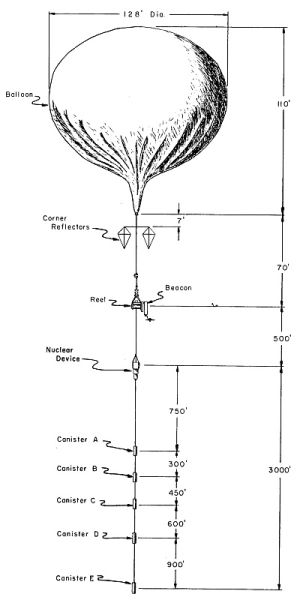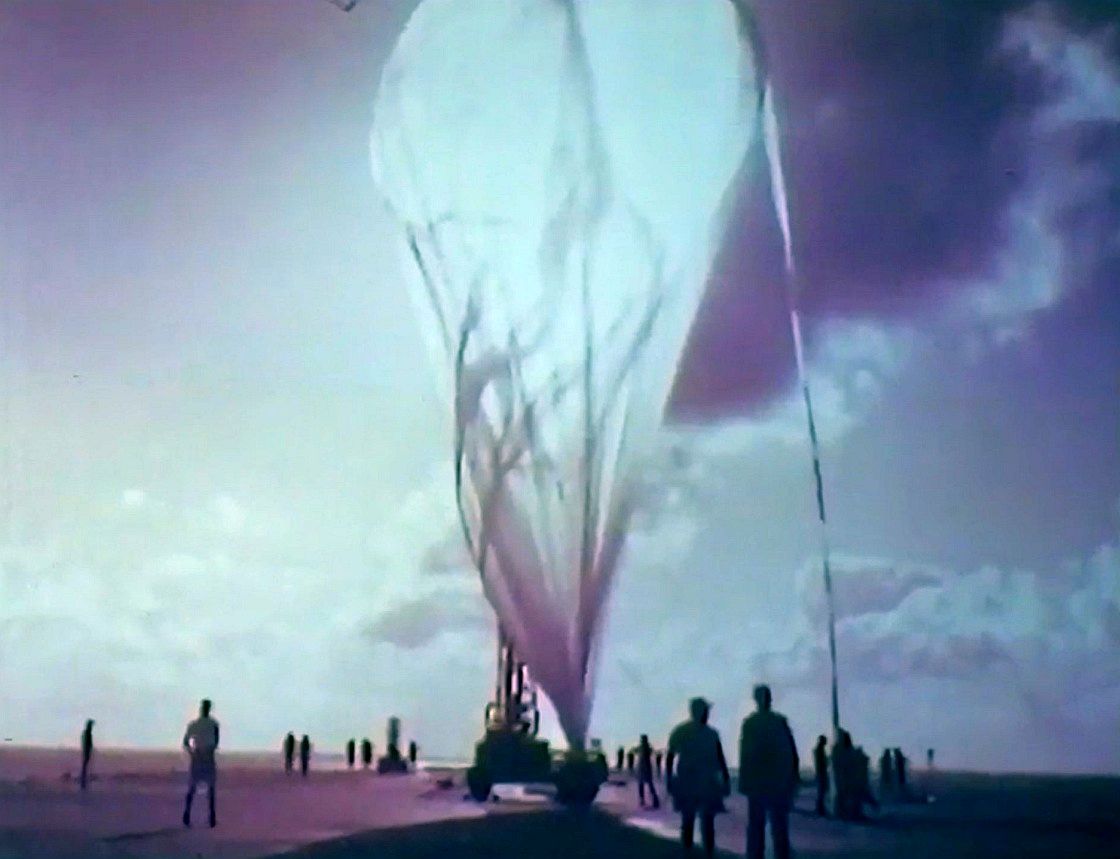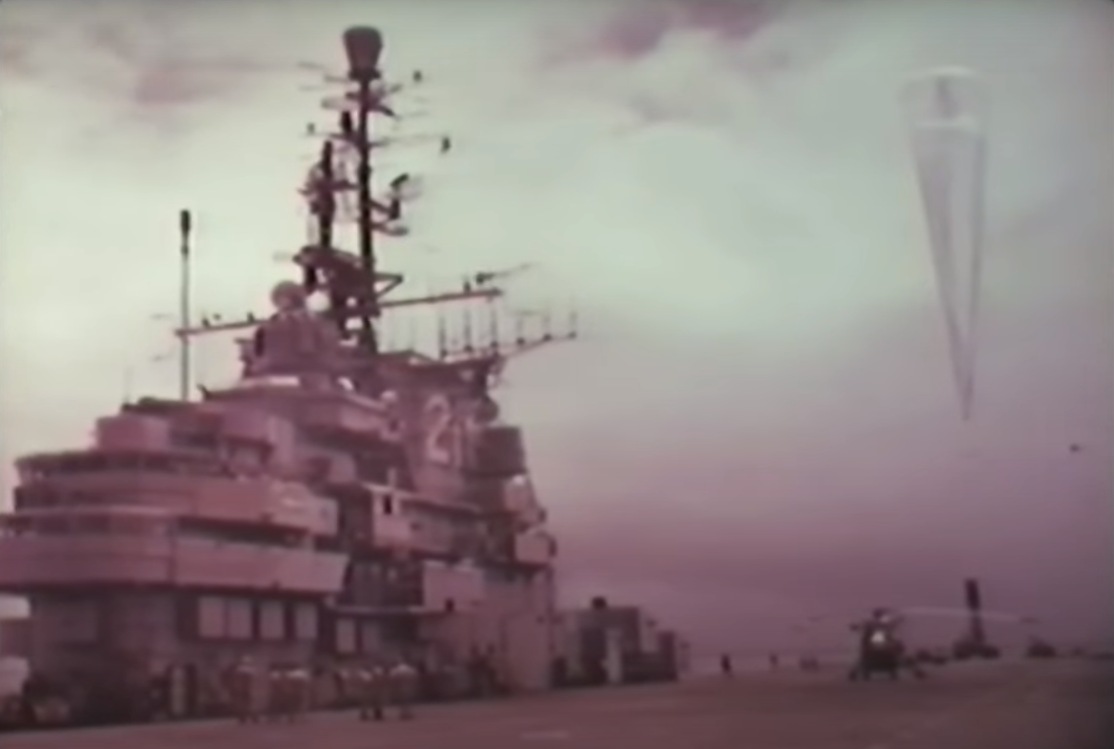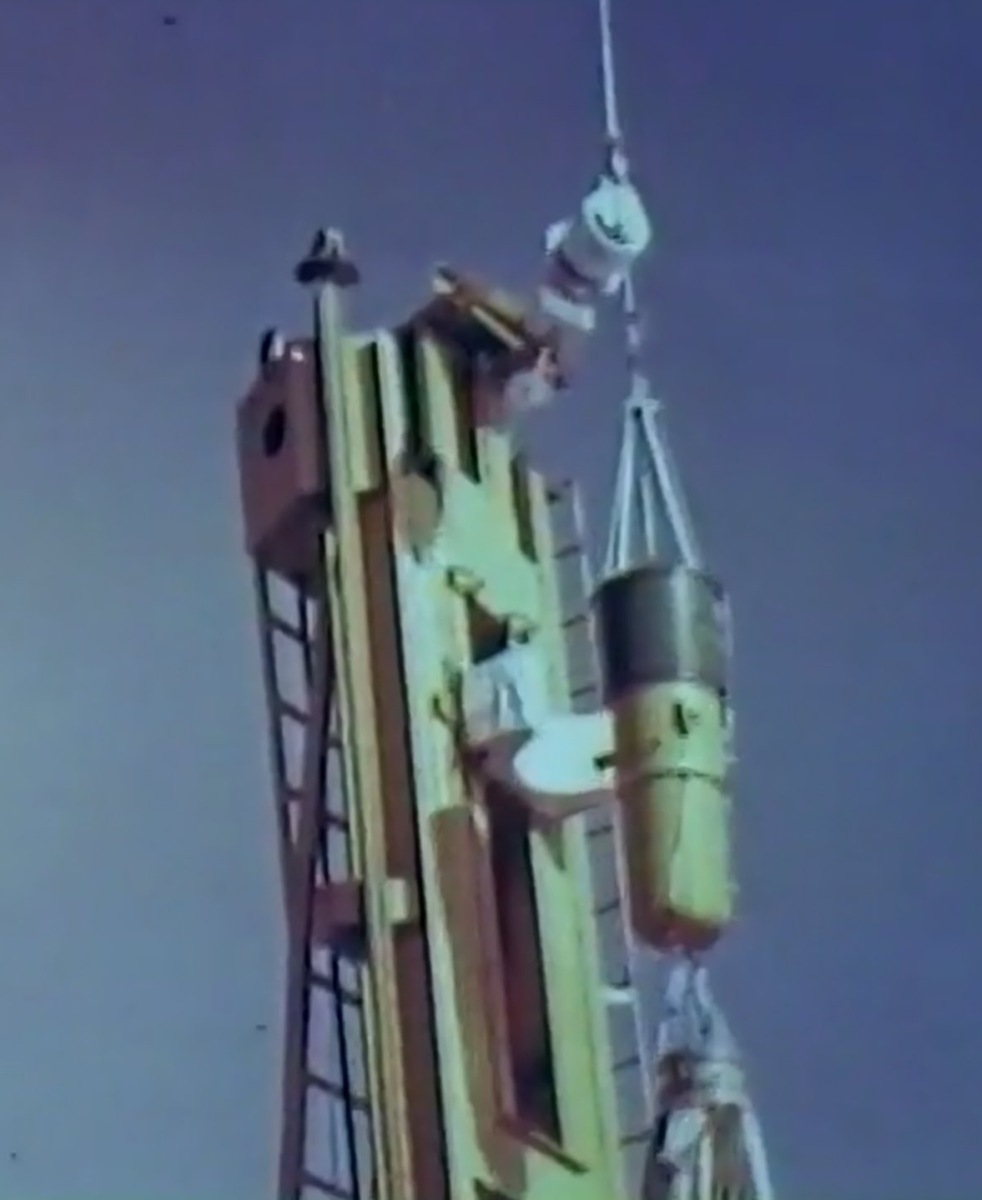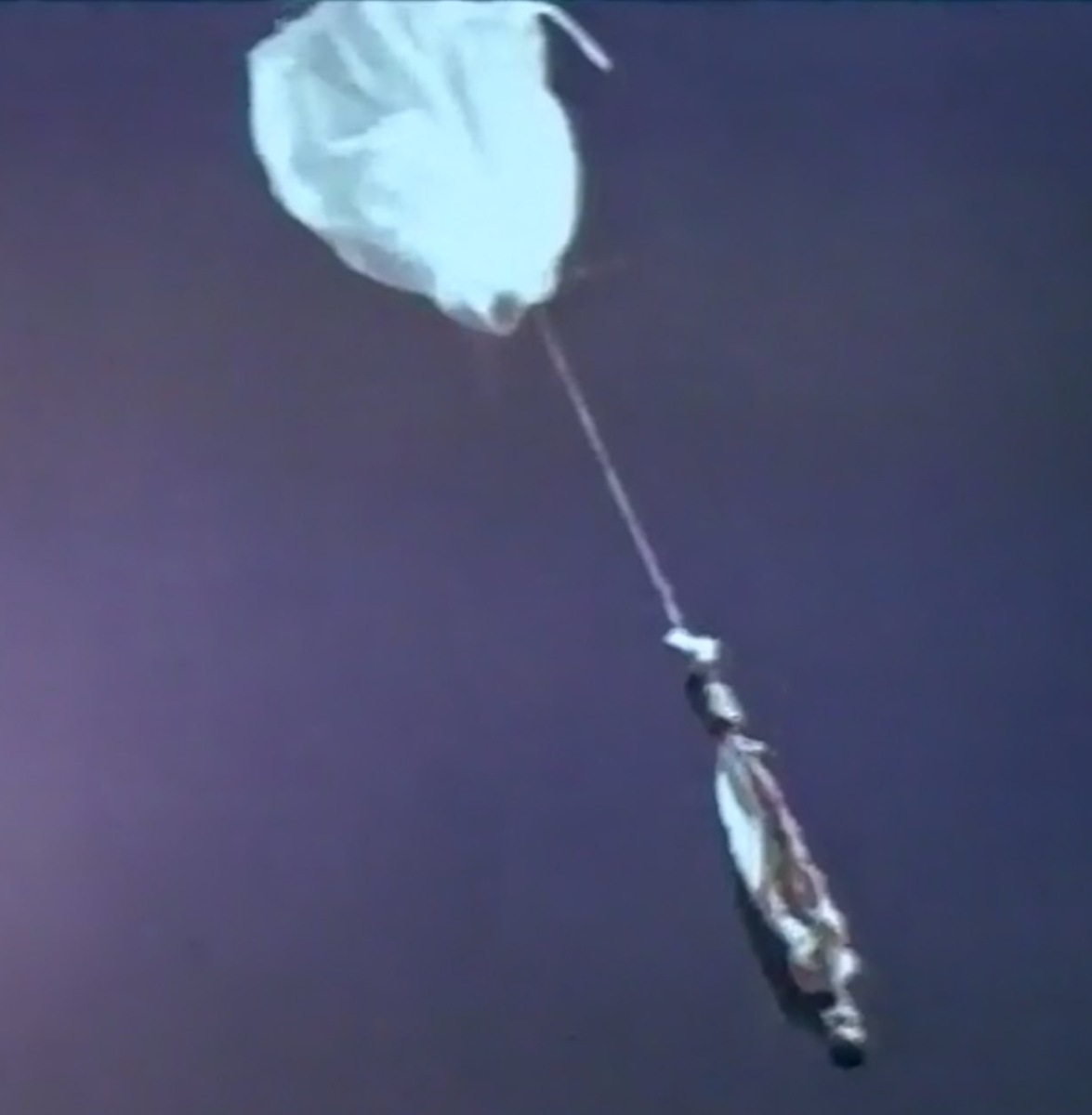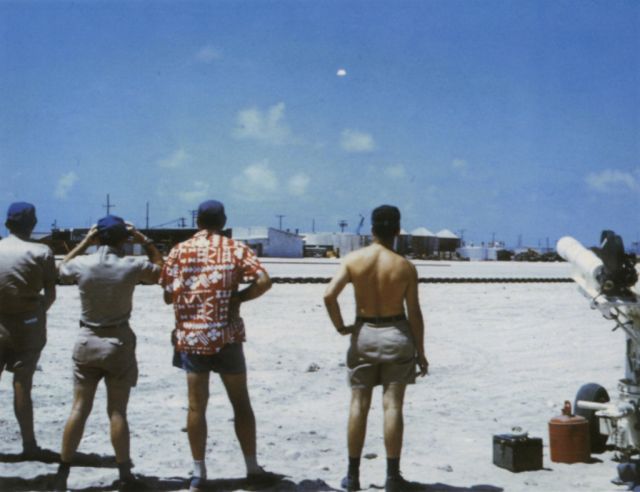Purpose of the flight and payload description
YUCCA was the code name of the first and unique test of a nuclear device carried by a stratospheric balloon. The main goal of the test, sponsored by the US Department of Defense and Los Alamos Scientific Laboratory was to study the effects of the detonation of a "W-25" air defense warhead at high altitude based on the possibility of using nuclear detonations in a defensive role against aircraft and ballistic missile attack. This test, along with two other exoatmospherics detonations of rocket-borne warheads of megaton scale (code named "Teak" and "Orange") were performed in the Pacific Ocean in 1958, as part of Operation Hardtack I.
These nuclear tests were designed to study how burst altitude affects the proportion of the bomb's energy that appears as airblast and thermal energy, the effect of high-altitude bursts on materials and the effect of high-altitude bursts on radio and radar propagation.
The YUCCA test involved the use of a stratospheric balloon that raised the weapon to its final detonation altitude. Althought balloons were used to replace the towers for several of the 1957 PLUMBBOB tests at the Nevada Test Site, these were tethered to control their positions and to pull the weapons down with winches if required. This was the first and only test on which a nuclear device was released under a balloon in free flight.
At first the operations were planned to launch the bomb-carrying balloon from the airfield at Enewetak Island but during tests performed in 1957, the high surface winds showed to be excesive for a safe launch of such a delicate payload. It was decided to use instead an aicraft carrier as launch platform as it could move at the same speed and in the same direction as the surface wind to keep the inflating balloon in still air for the launch. The practicality of this was demonstrated with five successful launches from Boxer off San Diego In September 1957 and further test in Enewetak in 1958.
The balloon was basically a standard USAF 128 foot diameter tailored tapeless envelope fabricated of a special resin two-mil polyethylene material. It was essentially cylindrical in shape with bottom and top special fittings taking an oblate spheroid shape at altitude with a diameter of 128 feet at its equator and a volume of 810,000 cubic feet.
The main load line consisted of a doubled length of 5,000-pound-test nylon line, separating the bottom apex fitting of the balloon and the top of the load-lowering device by approximately 70 feet. It was rigged with an aluminum T-bar, 7 feet below the bottom fitting, that supported two each corner reflectors for radar positioning. It also incorporateed a tension loading switch to check the lift of the balloon after it has been released into the vertical and just prior to launch of the system.
The Load-Lowering Device permited the separation of the nuclear device from the balloon by a distance in excess of 500 feet. The reel-out of the 3,000-pound-test nylon line was controlled by a braking system consisting of rotor and stator disks in a high viscosity silicon fluid. The reel-out operation was started by command firing of a squib that released a locking device on the shaft. It incorporated a pressure-actuated backup starter. The reel-out operation required approximately 14 minutes. The nylon line was wound on the drum under 1,000 pounds tension. A special bracket was mounted on the brake side of the device to support the X-band transponder beacon. Two squib cannons were rigged into this nylon line for command and timer cut-down of the system.
The nuclear device support harness incorporated provisions for attachment of a safety support lanyard to anchor the load train to the mast of the launch vehicle in the event of premature firing of actuation squibs prior to the launch of the balloon system. The base load supporting fitting also incorporated a load-actuated pin release lever that permited sequence arming of the weapon upon actuation of the canister deployment during flight. The receiving antenna for the weapon was rigged to the canister load line prior to load train assembly on the mast and was attached to the weapon upon assembly on the mast.
Finally, the Canister Deployment System consisted of a specially designed and fabricated fiberglass tube inclosed in a modified 30-foot personnel parachute for deceleration control purposes. The tube and parachute assembly was suspended below the weapon by a continuous nylon line through four rings in the top of the tube. The assembly was supported by two loops of this line over the two (of three) outside rollers of the special load fitting on the bottom of the weapon. The deployment was actuated by firing a squib cannon in this line. The main canister load line was attached to the pin release lever. The canisters were joined by specially stowed 1,000- and 1,500-pound-test nylon line attached to load rings on the tops and bottoms of the canisters. The pressure-actuated (backup) deployment box was attached to the outside of the parachute canopy, approximately 2 feet from the top.
Five Canisters containing gages that would allow to obtain instant measurements of several parameters during the detonation of the weapon at altitude, were suspended by a nylon line at ranges of 750 to 3000 ft from the device. Blackout of telemetering due to ionization was expected at zero time, but data were to be recorded and transmitted continuously for several minutes after the burst. Canister functions, including turning on the recorders, were to be controlled by a command transmitter aboard the USS Boxer.
SAFETY MEASURES
Boxer brought the weapon, stored in a special container within the nuclear safety magazine to the EPG after picking it up in February 1958,at the San Diego Naval Base.
Althought detonation of a nuclear weapon at the altitude planned for YUCCA would not expose task force personnel to nuclear radiation, during the process of placement of the device by free balloon, malfunctions potentially could lead to exposures. Safety planning for YUCCA focused thus, on the procedures in the placement process where problems could arise. Once launched, control of the position of the nuclear weapon on the free balloon depended of the prevailing winds and the lifting power of the balloon. Actuation of the detonation was to be controlled by the task force commander through a radio link. For proper placement of test instrumentation aircraft and auxiliary ships, as well as safety, it was important to be able to predict accurately the ultimate position of the weapon as well as the path it would take to get there. Winds aloft were measured on the morning of the launch. Based upon a general knowledge of the meteorology of the EPG, a flight profile was drawn up and a 25x25 miles YUCCA Firing Area was established.
The arming and fuzing system was equipped with several devices to ensure safety during the launch sequence and in case of a failure. The device was mechanically held on deck so that it could not be dropped. Mechanical locks on the arming and firing circuitry prevented firing on deck. A baroswitch system that sensed the atmospheric pressure, prevented it from being fired below 40,000 feet altitude. Also the weapon could be cut down at any time by radio command or would be automatically cut down if it misfired.
Finally, in the event that the weapon would remain intact in the seawater if it were cut down and fell from a low altitude, there was a remote possibility that the seawater could trigger a detonation. To prevent such an incident, two saltwater-activated probes were installed to activate an explosive puncture switch to short out the high-voltage unit and prevent generation of the current necessary to initiate detonation. Aditionaly, as it was thought advisable to have the weapon sink rather than float if it did land intact in the water, plugs were installed that would dissolve in the saltwater after about 4 hours so the weapon case would flood and sink.
Details of the mission, launch operations and detonation
Details of the balloon flight
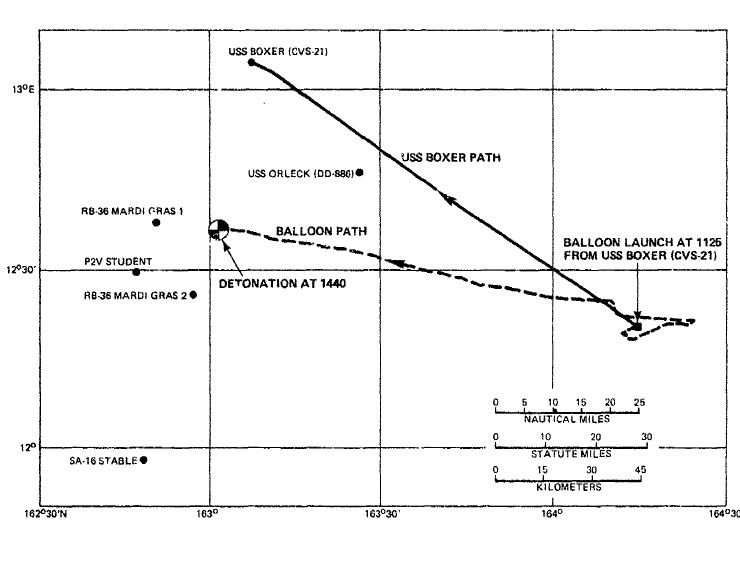
Balloon launched on: 4/28/1958 at 11:25
Launch site: USS Boxer (LHD-4) anclado al norte del Atolón de Eniwetok, Islas Marshall
Balloon launched by: Air Force Cambridge Research Center (AFCRC)
Balloon manufacturer/size/composition: Zero Pressure Balloon Winzen - 128 ft - Natural shape tailored tapeless - 800.000 cuft
Flight identification number: G-77-S
End of flight (L for landing time, W for last contact, otherwise termination time): 4/28/1958 at 14:40
Balloon flight duration (F: time at float only, otherwise total flight time in d:days / h:hours or m:minutes - ): 2 h 19 m
Landing site: Nuclear device detonated 140 km ENE of Eniwetok Atoll, Pacific Ocean
Campaign: Operation HARDTACK 1
This was the sequence of events during the operation at Eniwetok Proving Grounds (EPG).
USS Boxer departed Bikini Atoll at 19:00 on 27 April for a predetermined position for the balloon launch. Boxer arrived at the launch site coordinates of 12° 25' N, 164° 4' E by 6:00 on 28 April. From 6:30 to 8:30 the special launch equipment required was readied and the instrumentation canisters to be carried by the balloon were placed on the flight deck. At 8:00, Boxer had begun its downwind course, attempting to keep the air motion on the deck below 10 knots (18.5 km/hr) while keeping the ship's pitch and roll to a minimum. The YUCCA weapon was brought to the launch area at about 8:30. During the next hour and 20 minutes, the uninflated balloon was laid out in preparation for inflation and the instrument canisters and the YUCCA bomb were rigged. Attachment of radar reflectors, the nuclear device, and instrumentation to the uninflated balloon completed the rigging.
At 10:05 the Sandia Corporation arming party began preliminary device check out, and the amount of helium to be used was calculated by the AFCRC balloon-launch crew. Boxer maneuvered to eliminate any relative wind on the flight deck after 10:15. At 10:34 the arming party notified the AFCRC personnel to start the inflation. From 10:34 to 10:59 the balloon was filled with helium. At 11:01 the balloon, hitherto restrained in a horizontal position on canvas on the flight deck, was released to assume a vertical position. From 11:03 to 11:15 the arming party finished readying the weapon for firing. At 11:24 checks at the launcher verified that the safing pins were out and the tracking beacon on. At 11:25 the balloon and it's cargo were released.
After launch, Boxer headed for a point 65 km NW of the predicted zero position at 25 knots. The map above shows the path of the balloon, Boxer's course, other ship positions, and scientific aircraft locations.
The balloon climbed rapidly. It reached 7,000 feet in 7 minutes and 12,000 feet in 15 minutes. At 12:06 the balloon reached 40,000 feet, where the baroswitch system permitted arming and actuated the backup electrical timer. At 12:53 the balloon was at 85,000 feet. At 1330, all air and boat travel between Bikini and Enewetak was closed.
YUCCA was command-detonated at 14:40, after a delay because one of the RB-36 aircraft that would observe the test was out of position. The burst was visible from Enewetak (picture above at right) but was at such a distance that no protective goggles were necessary there. The shock wave reached Boxer 3 minutes and 16 seconds after the detonation.
Data Obtained
The main objective of the test was to determine the characteristics of a blast wave at altitudes of about 90,000 ft in order to provide an accurate basis for scaling to higher and lower altitudes. This objective was not fullfiled because of failure of the transmitter about 2 min before shot time. One pressure record from the 3000-ft canister was obtained from the direct transmission but appeared to be spurious.
However, two RB-36 planes were modified to serve as instrumentation platforms. Special windows and shelves were provided for the instrumentation and special wiring was installed. The aircraft were provided with special radar equipment to track the balloon assembly and position themselves. The AOC-CIC aboard the USS Boxer, which also served as the balloon launching platform, was utilized for control and as a back-up positioning system. Both aircraft were well positioned so that all instruments had the burst in their fields of view. Excellent records were obtained by the instrumentation aboard.
External references
- EMP History an excelent article on YUCCA EMP effects published in Futurescience, LLC website
- Nuclear device carried by an Stratospheric balloon video of the test in Stratocat's Youtube channel
- YUCCA - Balloon Nuclear Detonation Stratopedia, the stratospheric ballooning encyclopedia
264If you consider this website interesting or useful, you can help me to keep it up and running with a small donation to cover the operational costs. Just the equivalent of the price of a cup of coffee helps a lot.

